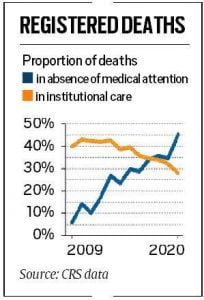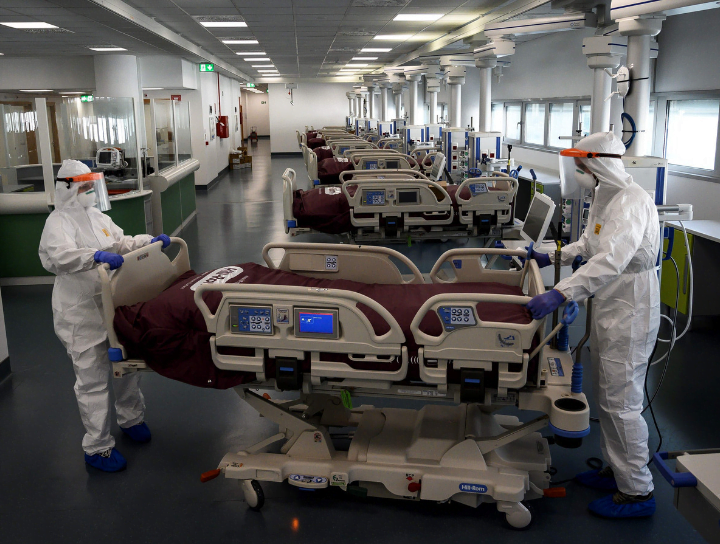COVID-19 has been especially tough on the healthcare industry around the world.
Healthcare around the world was pushed to its limits and every resource available in the hospital was directed towards COVID and its cause.
Everything from ICU beds to normal beds was rationed for COVID, sometimes taking up around 80 per cent of the total capacity of the hospital.
This had obvious consequences for non-COVID related patients, the magnitude of the problem was revealed by the recently released Civil Registration System (CRS) data for 2020, which pointed out that over “45 per cent of all recorded deaths that year happened in the absence of medical attention.”
The data also show a sharp decline in deaths recorded in hospitals and other medical facilities in 2020.

Every Bed was being used to treat COVID 19 Patients
Credits:-Economic Times
Is this a new problem?
The simple answer to this is No.
The proportion of deaths in the absence of medical attention has been steadily increasing over the past decade, and the proportion of institutional deaths coming down.
The main reason for this is because more and more deaths began to be reported, thus while in 2011 around 67 per cent deaths were registered ]in 2019 the same jumped upto 92 per cent of registered deaths, which is a significant jump.
Because of this increase, we could understand how many deaths happened outside the system.
Thus explaining the increase in the proportion of recorded deaths in the absence of medical surpassing institutional deaths in 2019 (the higher the reporting higher the deaths outside a formal institution.)
This shows that the problem always existed but the magnitude of the problem was hidden due to underreporting.

CRS data from 2009-2020
Credits:- Indian Express
So why is this a cause of concern this year?
The unusual acceleration of these trends took place in 2020, form 34.5 per cent in 2019 to 45 per cent in 2020 which is the single highest jump ever recorded.
These trends are expected to be reinforced in the data for 2021 when a large number of Covid deaths also happened due to a lack of access to hospital care.
This is a wake-up call for the government, which has to spend more and more on the healthcare infrastructure of the country so that in future pandemics, such an increase can be regulated if not stopped.





















































































